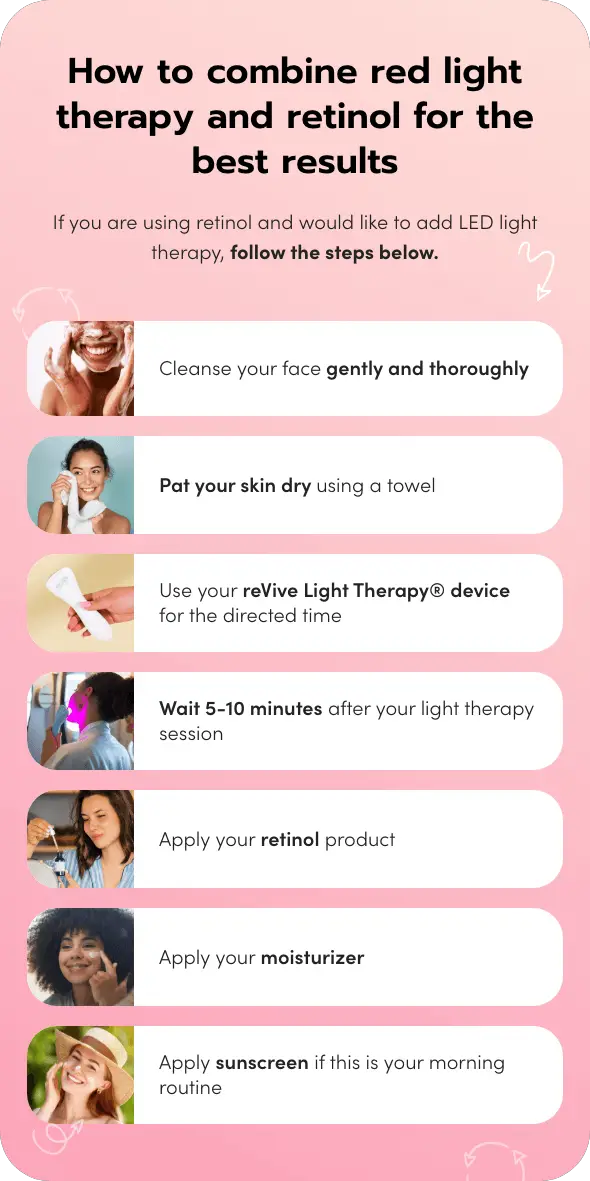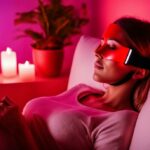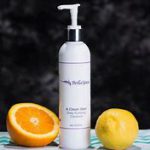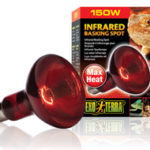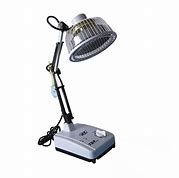As a professional skin care enthusiast, have you ever wondered if you can use red light therapy with tretinoin? Red light therapy has become a popular way to treat a variety of skin concerns, including acne and aging. However, when used in combination with tretinoin, a topical retinoid, there are a few things to keep in mind. In this article, we will discuss the benefits and risks of using red light therapy with tretinoin and how to maximize the results of both treatments. So if you’re looking for a way to get clear, glowing skin, read on to learn more about this powerful combination.
Yes, you can use red light therapy with tretinoin. However, it is important to consult your physician first since both of these treatments have different effects on the skin. Red light therapy is used to reduce inflammation and boost collagen production, whereas tretinoin works to reduce wrinkles, fine lines, and acne.

Contents
Can Red Light Therapy Be Used Safely With Tretinoin?
Red light therapy, also known as photobiomodulation, is quickly becoming a popular treatment for a variety of skin-related issues, from wrinkles and acne to rosacea and eczema. It is a safe, non-invasive procedure that is thought to stimulate collagen production, improve skin tone and texture, and reduce the appearance of age spots and other blemishes. But can it be used safely with tretinoin, a topical prescription medication used to treat acne?
The answer is yes, red light therapy can be safely used with tretinoin. Both treatments are non-invasive and can be used to improve skin health. However, it is important to note that red light therapy should not be used in place of tretinoin. While red light therapy can help improve the overall appearance of the skin, it will not treat the underlying causes of acne, such as bacteria and clogged pores.
Tretinoin is a powerful medication that can help reduce inflammation and clear up blemishes, but it can also cause irritation and dryness. Red light therapy can be used to help reduce the side effects of tretinoin and to help moisturize the skin. Red light therapy can also help improve the appearance of scars and other skin discoloration caused by acne.
How Does Red Light Therapy Work With Tretinoin?
Red light therapy is a form of light therapy that uses low-level red and near-infrared light to penetrate the skin, where it is thought to stimulate the production of collagen and elastin, two proteins that help keep skin firm and elastic. It is also thought to reduce inflammation, improve blood circulation, and reduce the appearance of scars and other discoloration.
When used in combination with tretinoin, red light therapy can help reduce the side effects of the medication, such as dryness, redness, and irritation. It can also help reduce the appearance of existing scars and other discoloration caused by acne.
What Are the Benefits of Red Light Therapy With Tretinoin?
The benefits of red light therapy with tretinoin are numerous. Red light therapy can help reduce the side effects of tretinoin, and it can also help reduce the appearance of acne scars and other discoloration. In addition, it can help improve the overall appearance of the skin, making it look firmer and smoother.
What Are the Risks of Red Light Therapy With Tretinoin?
The risks of red light therapy with tretinoin are minimal, but it is important to note that red light therapy should not be used in place of tretinoin. Red light therapy can help improve the overall appearance of the skin, but it will not treat the underlying causes of acne.
In addition, red light therapy can cause mild redness and irritation, but this is usually temporary and will resolve on its own. It is also important to note that red light therapy should not be used on open wounds or irritated skin, as it can cause further irritation.
How Can I Maximize the Benefits of Red Light Therapy With Tretinoin?
To maximize the benefits of red light therapy with tretinoin, it is important to follow a few simple guidelines. First, it is important to use sunscreen before and after red light therapy, as it can make the skin more sensitive to the sun’s rays.
In addition, it is important to use a red light therapy device that is specifically designed to be used with tretinoin. This will help ensure that the device is safe and effective. Finally, it is important to use the device as directed, as overuse can lead to skin irritation and other side effects.
How Often Should I Use Red Light Therapy With Tretinoin?
The frequency of red light therapy with tretinoin will depend on the individual’s skin type and condition. In general, it is recommended to use the device two to three times a week for best results.
It is also important to note that red light therapy should not be used in place of tretinoin. While red light therapy can help improve the overall appearance of the skin, it will not treat the underlying causes of acne, such as bacteria and clogged pores.
Top 6 Frequently Asked Questions
What is Red Light Therapy?
Red light therapy is a non-invasive, pain-free treatment that uses natural light to improve skin and overall health. Red light therapy works by emitting low-level light from LEDs (light-emitting diodes) to penetrate the skin and stimulate the body’s natural healing processes. This can help reduce inflammation, improve skin tone, reduce wrinkles and even help with hair growth. Red light therapy can be used as a stand-alone treatment or in combination with other treatments for best results.
What is Tretinoin?
Tretinoin is a topical medication used to treat acne and reduce the appearance of wrinkles and fine lines. Tretinoin is a form of vitamin A and works by increasing the rate of skin cell turnover and reducing the buildup of dead skin cells, which can lead to clogged pores and breakouts. It is a highly effective acne treatment and can also help improve the appearance of fine lines and wrinkles.
Can You Use Red Light Therapy With Tretinoin?
Yes, red light therapy can be used in combination with tretinoin to promote skin health and improve the appearance of wrinkles and acne. Red light therapy and tretinoin can be used together to help provide a comprehensive skin care regimen. Red light therapy can help reduce inflammation, improve skin tone and reduce wrinkles, while tretinoin helps reduce breakouts and improve the appearance of wrinkles and fine lines.
What Are the Benefits of Using Red Light Therapy With Tretinoin?
Using red light therapy with tretinoin can help to provide a comprehensive skin care regimen that helps reduce inflammation, improve skin tone, reduce wrinkles, and reduce breakouts. Red light therapy can help stimulate collagen production and improve the appearance of skin, while tretinoin can help unclog pores and reduce breakouts. Combined, these two treatments can help to improve overall skin health and appearance.
Are There Any Side Effects From Using Red Light Therapy With Tretinoin?
In general, there are no known side effects from using red light therapy with tretinoin. However, some people may experience skin irritation or dryness when using tretinoin and red light therapy together. It is always important to speak to your doctor before using any type of skin care regimen to ensure it is right for you.
Are There Any Precautions I Should Take When Using Red Light Therapy With Tretinoin?
Yes, there are a few precautions to take when using red light therapy with tretinoin. It is important to avoid direct skin contact with the light source, as this can increase the risk of skin irritation and burns. It is also important to avoid overexposure to the light, as this can increase the risk of skin damage. Additionally, make sure to use a sunscreen with SPF 30 or higher when using red light therapy with tretinoin, as this can help to protect the skin from sun damage.
Vlog: RETINOL & LED LIGHT THERAPY?| Dr Dray
Red light therapy is a powerful tool in skincare, and when combined with tretinoin, it can provide even more benefits. It can help to reduce wrinkles, improve skin tone, and even combat acne. However, it should be used with caution and only after consulting with a skincare professional. With the right application, red light therapy can be a safe and effective way to enhance the effects of tretinoin.

